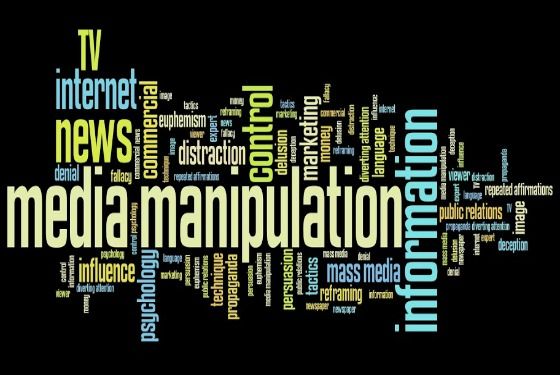
How much is too much?
Can one write anything new about manipulation and fake-news? Maybe or maybe not but certainly the attention, the concern and especially the counter-action must enter into the daily survival procedures of any of us, far from excesses and paranoia, in which case we would not have solutions anymore, we would have nothing more to do.
Neither for us, nor for our children or for tomorrow’s generations (if we are interested in that anymore).
Who knows what public opinion is anymore (having an opinion on public opinion does not mean knowing what this complex concept with many false meanings represents)? We recall some of the defining elements of this theoretical elaboration which is far from being of a great and inaccessible complexity, incomprehensible to the great majority of … the public opinion!
The opinion comes from the Latin “opinio” (derived from “opinari”) – to express an opinion (equivalent to the Greek “doxa”). And publicus comes also from Latin – from the oldest “populus”: people. Therefore, the public opinion is equivalent to the opinion of the people.
Therefore it is inadequate (not to express ourselves more severely) to say, what one has been hearing from morning until next morning, for decades in a row, on all meridians, that “the public opinion demands”, “the public opinion wants”, and so on. No, the opinion does not ask!
The accepted general idea (totally, partially or totally rejected) of a state of affairs can be considered to be a “public opinion” but its personalization and its transformation from effect to cause (its own cause) is already the first manipulative step in the vast arsenal of these actions’ specific techniques.
Raising the public opinion as an absolute judge represents a risk about which, eight decades ago, Jean Stoetzel (1943) spoke, warning the world about the danger of deifying the public opinion.
The public opinion cannot be confused with a sum of individual opinions, although it exists only in relation to persons, individuals and not independently of them. The public opinion could be considered a kind of people’s conscience, an informational matrix that generates mass behavioral attitudes, impulses and experiences that can easily degenerate into so-called revolutions that, not once, have actually proved to be insurrection arrangements.
The public opinion, alongside culture, education, traditions and beliefs, is an important and perhaps the most dynamic component of the social cognition.
The political power has always known how to “play” with the public opinion, with the feelings and emotions of a gregarious being such as the human being. The modern manipulation techniques are based upon S.Freud‘s methods supported by the hypothesis that unconscious psychic processes play a major role in creating subtle ways of manipulating masses in contemporary societies, whether they are democratic or not.
More than a century before (18th century), Immanuel Kant urged the population, saying: “Have the courage to use your own sense of reason” … – where to originate the courage?
Gustave le Bon (in The Crowd: A Study of the Popular Mind – 1895), the parent of the first treatise on manipulation techniques, wrote: “The unconscious action of crowds substituted for the conscious action of individuals is one of the distinguishing features of the present era.”
The American Revolution, the French Revolution, the Russian Revolution and the revolutions of the ’90s were also based upon this “distinctive feature” … Was there or was there not too much manipulation? Was there or was there not too much “public opinion”? Was the collective unconsciousness too much stimulated or not enough? Was it too much or not enough? …
It was and it surely will be! …
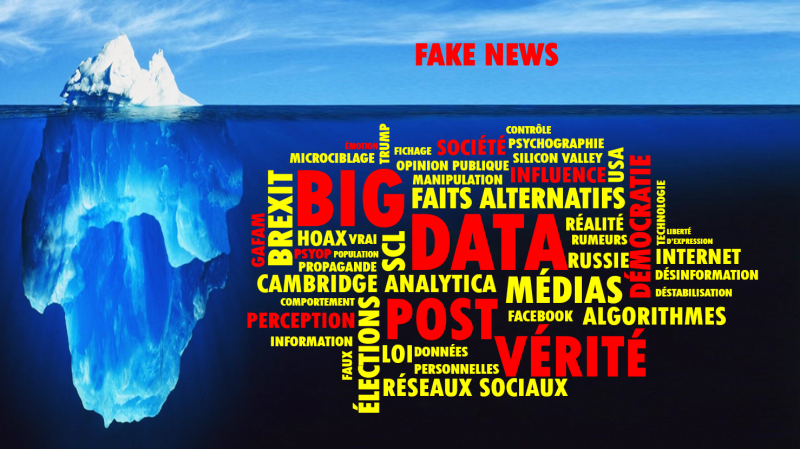
The masters of manipulation
Sun Tzu had neither the concept of manipulation nor any treatise on this subject, but his teachings were the basis of all the manipulation and propaganda techniques theorized and applied (or vice versa), many centuries later.
According to British historian Philip Taylor, one of the earliest and most representative propagandists in Europe was Henry VIII, a controversial historical figure who planned in detail the coordinates of a fierce state-funded campaign against Rome, the papacy and Catholicism (a campaign ended with the definitive exit of England from the papal guardianship).
A few decades later (1622), Pope Gregory XV founded the Congregatio de Propaganda Fide (Congregation for the Propaganda of Faith), an institution that aimed to support the spread of Catholicism in non-Catholic territories around the world and especially in the colonies (it seems that it is also the first institution in modern history to explicitly use the term “propaganda”). It should be noted that the activity of the congregation continues even today…
In the context of the French Revolution, an association was established in Alsace, simply called Propaganda, whose purpose was to spread and “cultivate” revolutionary ideas.
A promoter of the freedom and ideas of the Revolution, Napoleon, as soon as he became first consul, introduced censorship and banned, in just one year, (1800-1801), 64 of the 73 publications that were printed in France at that time.
“Three hostile newspapers are more to be feared than 1000 bayonets … If free press continued to exist, I would not have been in power for more than three months,” wrote the emperor in his memoirs, as a legacy for the centuries to come.
In fact, Napoleon created the first state based upon official propaganda (even if, under his reign, there was no specialized institution in this regard – that institution was Napoleon himself!).
The American Revolution also involved the use of an entire arsenal of “communication techniques” accompanied or preceded by a rich suite of subversive actions (such as the Boston Harbor tea business), the rapid propagation of their versions of events, the “bombardment” and the saturation of the public with messages (with varying degrees of truth), on as many communication channels specific to the end of the 18th century.
In April 1914, a series of violent riots broke out at the mines of billionaire Rockefeller (the owner of Standard Oil corporation).
These riots were bloodily put down by the National Guard (dozens dead and wounded). With a collapsed image and severely repudiated by the “public opinion”, J.D. Rockefeller hires an intelligent journalist, named Ivy Lee Feller, to design, organize and run a press company to bring him back to the “graces” of the public opinion.
Then Feller launches the famous words: “Tell the truth, because sooner or later the public will find out anyway.”
In the world of the press, there is a strong unanimity in considering Ivy Lee as a precursor to the field of public relations, with many considering him the very founder (Lee has used this concept – public relations – since 1905).
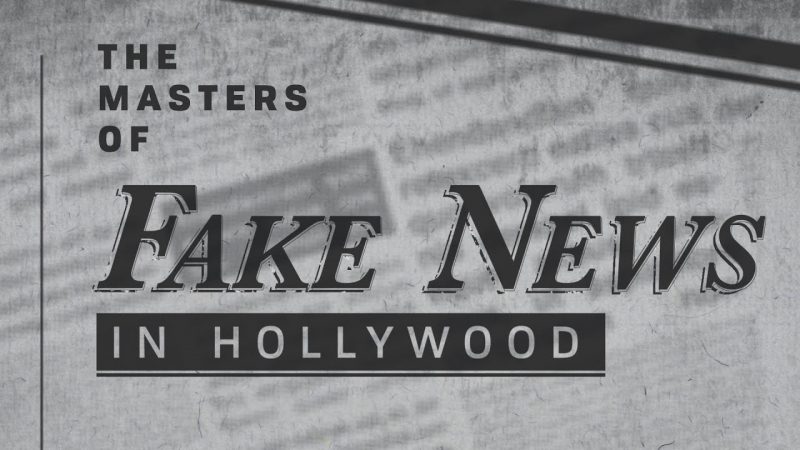
But Edward Barnays (Sigmund Freud‘s nephew) had a major role in the development of propaganda and manipulation techniques, a man who “mixed” the ideas of Gustave le Bon and his famous uncle so that the result was to “preserve the appearance of a democratic society in which people thought they were in control”. And they still believe it…
Freud’s fundamental idea “creatively” applied by Barnays, was that neither individuals nor, at least, masses can be driven by rational thoughts but only by primitive and unconscious desires and impulses.
Edward Barnays goes “further” (he was called “the new Machiavelli” for a good reason) and argues with “scientific” arguments that, in his opinion, propaganda is a necessary procedure of “enlightenment of the masses” because it channels the energy and desires of the masses and it is a compulsory component of democratic societies, a guarantee of their stability.
Edward Barnays was born in Vienna (1891). He studied and lived in the US and did not have a higher education in the field he later became a “great master” thereof (he was an agronomist engineer, just like another “great master”, Heydrich Himmler, who was a zootechnical engineer, who later turned from an animal butcher into a butcher of people).
He completed his “internship” by promoting popularization campaigns for a number of artists of the time and then co-opted into a government working group whose main purpose was to gain popular support for the entry of the United States into World War I (the group was led by George Creel).
The Public Information Committee (the official name of the group) has masterfully fulfilled its role so that E. Barnays was rewarded with the honor of being among the participants in the Paris Peace Conference (1919).
One should bear in mind that, also, due to his well-articulated propaganda campaign, Woodrow Wilson, the president of the United States, was already assimilated into the public consciousness as a “liberator of peoples” (not long after, history has met this name but that time it was attributed to I.V. Stalin – how bitter are the lessons not learned from history!).
Barnays, however, did not like the term “propaganda” because it already had negative connotations through its use by his German “colleagues” so that the phrase “public relations” was being used; it was a phrase that emerged with the assertion of the nation-state …
Gradually and also benefiting from the immense advantage of being S. Freud’s nephew, Barnays succeeded in shadowing Ivy Lee (Rockefeller’s “benefactor” in harmonizing the billionaire’s image with the rest of the world), guiding the public relations issues from the simple information to the structural understanding of the public.
Meanwhile, Walter Lippmann made his presence felt in the public space and with his essay, Public Opinion, in which he asserts his desire to be not only an analyst (like Barnays) but also an invisible influence factor, a director of a great mystery for public opinion … In 1925, W. Lippmann in The Phantom Public wrote very explicitly and convincingly: “The ordinary citizen has come to feel like a deaf spectator, in the back row, who has to look at a mysterious spectacle, barely refraining from sleeping.”
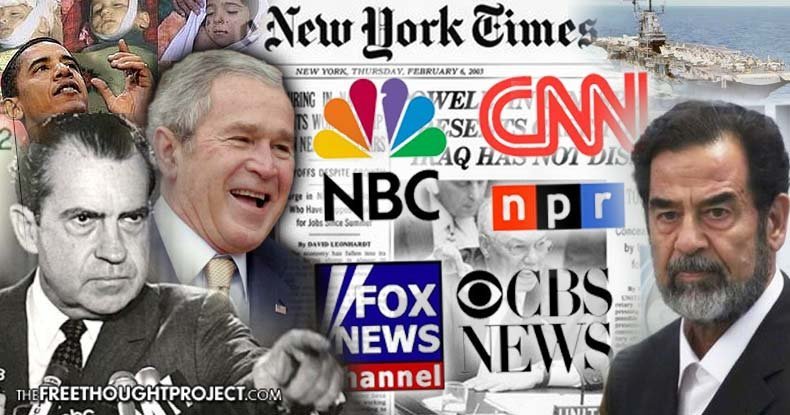
Particularly prolific, in 1928, Lippmann published his famous book called Propaganda, which explicitly and without doubt presented the manipulation made by a small group of people – an invisible government – that shaped minds, formed opinions and guided the tastes of citizens (it was one from the first and most explicit acknowledgments of the existence of a shadow government – or parallel state, as it is called today).
With Lippmann, a new term appeared on the propaganda scene – the consumerism, which is the main way in which people are given the illusion that they are in control; in fact it is about transforming them from active citizens into passive consumers (in other words, consumerism has transformed citizens from free and healthy people into a kind of “happy” and sick slaves).
Barnays also contributed to the development of the “culture” of consumerism, in which: “people buy what they do not want and satisfy needs they do not have“.
Thus, he successfully initiated and completed a lot of “consumerist emancipation” actions such as the popularization of smoking amongst women (cigarettes and smoking being presented as essential symbols of women’s independence), promoting car brands by inserting sexual symbols in advertisements, and many other such examples of … emancipation!
Starting from Gustave le Bon’s ideas set forth in the work Psychology of the Crowds, regarding the “law of the mental unity of the masses” but also from Kunczik‘s ideas, according to which “intelligent individuals maintain the stability of society and prevent chaos, to the benefit of all”, Barnays built the theory and working methodologies with three principles in his thesis:
- atheism;
- Freudianis (as a grandson of S. Freud);
- the concealment of manipulators of public opinion (hidden action of manipulators of public opinion, through which the “human herds in the right stables” had to be handled).
Within the Institute of Propaganda Analysis, established in Chicago in 1927, propaganda was defined as “the collective attitude management obtained by manipulating significant symbols in the public consciousness.”
If we were to propose a definition of propaganda then it would have a much more up-to-date statement, as it is in fact the sum of the techniques applied to manipulate the irrational beliefs and behaviors of the population or of some important segments of it by using symbols and speeches by the interested power centers.
Harold Lasswell, a political scientist and communications theorist, specialized in propaganda analysis, professor at the aforementioned institute of propaganda in Chicago, in his work The Encyclopedia of Social Sciences explained a number of essential theoretical aspects and elements:
- social managers must focus on “a completely new control technique, mainly through propaganda”;
- one should admit “the ignorance and the stupidity of the masses and we must not give in to the democratic dogmatism in which the people, the public are the best judges of their own interest”.
The democratic dogmatism – a label that not even the greatest communist opponents used …
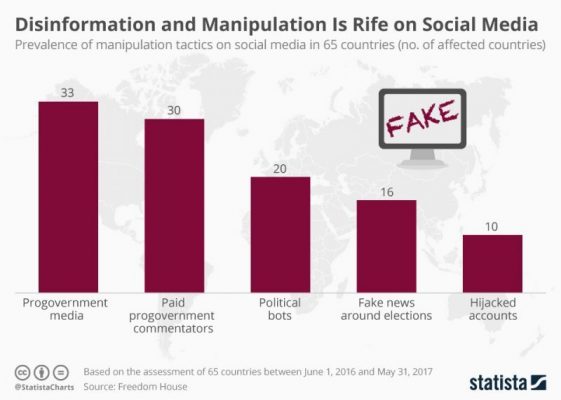
Theodor Adorno (German philosopher, psychologist and sociologist of the last century but whose theories are still applied today) and Herbert Marcuse identified three problems, three “potentialities” of the cultural industry:
- reducing human beings to the state of mass with controllable plasticity by blocking, preventing the emergence and development of emancipated individuals, who are capable of making rational and altruistic decisions;
- the replacement of the legitimate desire for autonomy and self-awareness through the security of conformism, mimicry and passivity;
- the permanent support and validation of the idea that people are trying to flee, to escape the absurd, painful, unfair and cruel world in which they live by transferring to an unreal, hypnotic, illusory world of self-satisfaction and material satisfaction.
Aldous Huxley wrote conclusively and cynically in his book, Brave New World: “In one word, the early advocates of universal literacy and the free press did not consider the almost endless appetite of man to be distracted.”
And he continues with an unequivocal warning: “The impersonal forces over which we have almost no control seem to push us all in the direction of the wonderful Brave New World nightmare; and this impersonal thrust is consciously accelerated by the commercial and political organizations that have developed a series of new techniques for manipulating the thoughts and feelings of the masses in the interest of minorities”.
The democratic propaganda was not built upon the basis of class struggle, racial and / or religious, cultural, antagonisms, but upon interests.
The totalitarian propaganda had (and still has) as ideological axis either the class struggle, or the differences of race, religion, or some of all these differences.
The totalitarian propaganda also has a number of characteristics common to any form of dictatorship:
- a unique control center;
- it is absolute, in the sense that it covers all social segments and the whole spectrum of activities;
- it is centered upon the cult of personality;
- it is the carrier of the most severe means of censorship;
- it rarely has effects beyond the borders of one particular country.
Which of the two types of propaganda have a better “opinion” about the public opinion?
As already shown in these few lines, democratic or not the propaganda considers the masses, the public opinion, the citizens a kind of more or less speaking and rarely thinking flock.
Democracy means neither greater respect (respect, no fear) for the public opinion nor the lack of censorship, but only masking it in forms that are much harder to detect (and thus more effective).
The model of corporate propaganda was founded and theorized by Noam Chomsky and Herman Edwards who showed that due to the organization of media institutions in corporations, here also, as in other economic sectors, to pivot the entire activity and all the dear values of the press (independence, truth, objectivity, deontology, etc.) appeared around the supreme criterion of economic efficiency: the profit.
The “natural” follow-up appeared immediately: the entire media was infested with fake stars, fake news, the thrill-seeking, many words and little information.
This is why the media was associated with propaganda, the fake news, the mediocrity, the post-industrial “modernism”, the biased “truth”, and so on.
The fact that the propaganda became white, black or gray was only natural in the context in which in the press, as in other areas, the fighters for truth and independence are on the verge of extinction but are stubborn enough to go on.
We conclude this paragraph with a quote from the wisdom of Walter Lippmann: “It is no longer possible to believe in the original dogma of democracy” (from his book, Public Opinion) – and this was written immediately after the end of the First World War even by one of the founders of CFR (Council for Foreign Relations) – the shadow government of the United States of America.

Manipulation and fake-news
It is difficult to assess whether the joy triggered by the collapse of the Berlin Wall and the socialist states is still preserved today, but according to the opinion of General (put in reserve) Mihai Mărgărit (former head of the Army Intelligence Directorate), the manipulation of public opinion continued even after the 1990s, using other terms, for other purposes, with a different intensity, and with a vastly superior arsenal of means.
Three decades after Milton Friedman’s global victory of capitalism, Wolfgang Streeck published a book called Buying Time: The Delayed Crisis of Democratic Capitalism.
We have written on numerous occasions that, in our opinion, the political movements of “ideological liberation” which started between 1987-1989, had as a deep motivation the salvation and prolongation of the life of democratic capitalism but, at a certain moment in life one could notice on all levels of social, economic and political life, that democracy is seriously entangling vectors of power, and the manipulation of the media, the control of the media and the fake-news are sound arguments in support of this hypothesis.
The double standards, the multi-speed integration, the justice games in the “cleansing” of the market and the political world of the “undesirable” people, the media offensive against the state, its institutions and the regulatory processes are all forms by which democracy will be the next victim of the market, the new ideological-religious construction in front of which all the humans must prostrate in an absolute and endless admiration…
A new (though old) activity has appeared, developed and permeated in each person’s life, day and night, characterized by a general and total comprehension, with little possibilities for circumvention: the surveillance, without many of us knowing that this rarely means more safety but it always means more control.
The censorship (the most well-known form of media surveillance) does not mean, first of all, blocking the information considered uncomfortable or too “elevated” for the ordinary citizen’s mind, but infesting the public consciousness with misinformation, and actions that distract from the truly significant and important events.
On the one hand, the epidemic of fake news is one of the most terrible diseases of democracy, against which there is still no vaccine and which represents nothing but a permanent state of freedom induced coma. The big problem with fake news is that, like any expression of evil, it is infinitely easier to inoculate, to cultivate, to develop than to combat it.
On the other side, the truth is infinitely more difficult to propagate, to assimilate, to tolerate, to seek, to present (it does not produce raiting! …) and it is infinitely easier to cast ridicule on it, to ignore it, to label it as fake!
This is how fake news becomes the absolute winner in any commercial, political, ideological or military struggle. General (put in reserve) M. Mărgărit shows that “the problem of the existence and launch of fake news, as a social phenomenon, continues to be a major threat even during the post-Cold War period”.
We can safely say that fake news is media terrorism and it is indispensable for political regimes, from left to right, from dictatorships to democracies (or what’s left of them) and vice versa.
As a result, there is no independent media. Even if the media wanted to be independent, it could not be, for the simple reason that every news story goes through a “contaminated” environment, every news article comes from an interested (or “poisoned”) source, it has attached from the birth a fake-news appendix, precisely as a result of the widespread and general infestation of the “news” streams, simultaneously or gradually, by the most unfathomable institutions and centers of power, visible but especially invisible, well and carefully protected by the institutions of the “legitimate” power (justice, intelligence services, army, etc.).
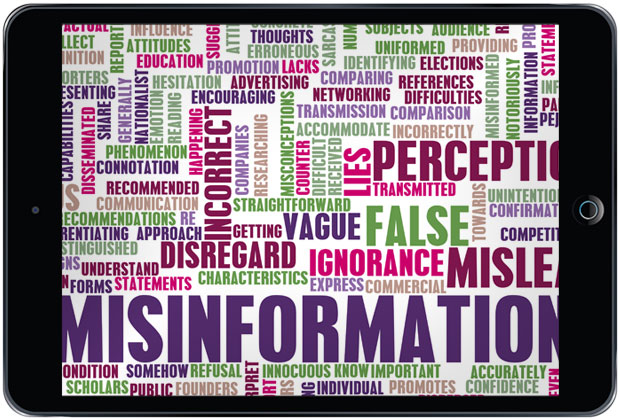
Therefore, how can one define the fake news? Without claiming a universally valid definition, the fake-news is a set of specific media and communication procedures structured into actions and operations planned to co-opt, process, store, evaluate and provide partially or wholly false information, in relation to a predetermined program or strategy, for the purpose of interested manipulation of the public opinion and the competing power centers.
But let’s not confuse fake-news with propaganda and propaganda with manipulation (the first two make up the foundation of the third). In addition to these, subliminal publicity, the desensitization, the accelerated saturation of public consciousness must be mentioned.
For example, the issues that required desensitization techniques (or predictive psychic programming) were among the most complex: from accepting military interventions in Iraq (on chemical weapons grounds and supporting terrorism – both accusations later proven to be false), to the opposition against the dictatorship (Sadam Hussein, portrayed as a satrap) until the tacit acceptance of human cloning, transhumanism and other experiments, more or less recognized, on human subjects (including the “market” of human organs).
The occult symbolism is not a novelty in terms of manipulating public opinion (except in the light of the fact that it is increasingly difficult to remain hidden and occult).
The occult knowledge is considered to be sacred, timeless and impossible to access by the irrational plebeians, dominated by quantity and by the instinct of self-preservation of the species and property, by the anonymous voters (even though its initial basis and foundations are long lost, even for those more initiated or truly initiated).
Manly P. Hall wonders, in the work Secret Teaching of All Ages, whether: “The arts and sciences that the human race has inherited from the nations and civilizations of the older world are hiding under a fair exterior a mystery so great that only the most enlightened intelligence can understand its importance and subtleties? ”
The symbolic “code” the most accessible to the masses but also the most encrypted was and is the religion supported by a suite of traditions from time immemorial, a religion which has been practiced in an organized, institutional way for centuries and millennia.
But now, through the new “temple” briefly called Mass-Media, with the new god, the money, with the new religion, the market economy is the systematical and insistent demolishing of traditional values, be they moral, religious or political is being preached, but also by the extreme materialism, the primitive selfishness, the spiritual void, the strictly individualistic, reductionist and reduced existence of consumer goods, without too much education and with a minimal culture, that is exactly what it takes to be as democratic as possible (but also less free).
For who is still free when he or she is “bound” by so many expressions of a materialism for which the term itself has become insufficient and gentle in defining and characterizing the present and the agglutination, the absolute osmosis between man and matter?
Michael A. Hoffman, in his book, Secret Societes and Psychological Warfare, emphasized the following: “These blind people are told they are free” and that they are “highly-educated” even as they walk behind the signs that it would make any medieval peasant run away from them with horror and panic.”
In order to paraphrase these words and to adapt them a little to our specifics, we must say that one ought not, however, to wage endless and raging campaigns against little old women who kiss with veneration the icons or relics of a saint.
However, whoever believes that these women are more ignorant than a flock of young people crossing the street with their headphones in their ears and their eyes on their smartphones under the assault of hundreds of “blessings” shouted with 100 dB by car drivers, is bitterly misleading.
And we can also remember the words of the great man, Petre Ţuţea, according to which: “An old woman who prays to God on her knees is worth a thousand philosophers who think on their tips.”
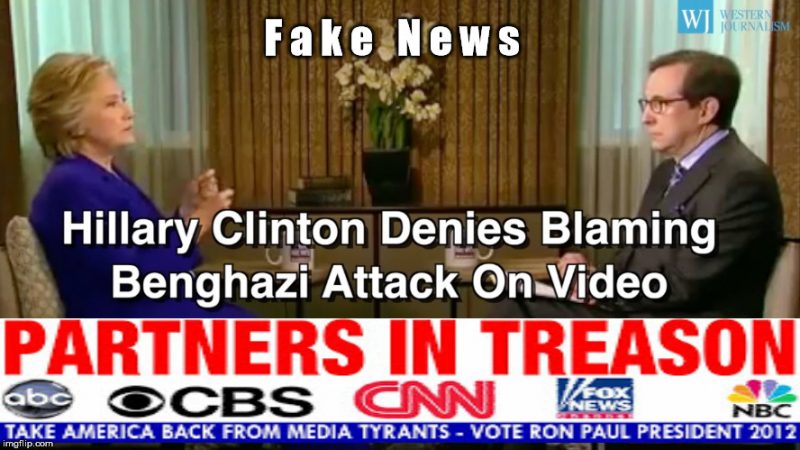
Conclusions
We have never been able to find an explanation for how it was possible for millions of people who have never seen each other, who had nothing to share with one another, to kill each other with such cruelty, for years in a row, during the First World War.
And again, we have never been able to find an explanation, which might have any trace of reason, about how it was possible for tens of millions of people who have never seen each other, who have never spoken to each other, who had nothing to share with each other, to kill each other so massively , with such cruelty, during the World War II.
If propaganda and mass manipulation were the tools that triggered and carried out crimes of such magnitude, it means that there is no other way than to urgently reconsider our position of higher beings, of civilized beings without which the planet would die, which are illusions and names that are expected to lift the human being from his state of affairs, making him believe he is in a position where he has never been.
And if, after such cataclysms, if someone thinks that the human race has learned anything at all, they are wrong. Completely wrong! …
In 2014, the NATO strategists were completely taken by surprise by the appearance out of “nowhere” of tens of thousands of soldiers, without military insignia, armed to the teeth, who occupied Crimea in the most authentic type of blitz-krieg (in parallel The Kremlin blamed the fascist regime in Kiev, a regime that had just exiled Yanukovych to Moscow).
We do not mean to say that the wars in Korea, Vietnam, Iraq, Afghanistan, Syria, etc. Had transparent, purely altruistic, arguments for the eternal peace and good of humanity, but only to note the moment of the birth of a new type of war, a war in which propaganda and the manipulation had a role at least as important as the weapons themselves.
An intervention of the Russian military-political conglomerate, the hybrid (or non-linear) warfare is a type of post-modern war (as Professor Mark Galeotti of New-York University points out), a war that is ongoing but which is never always officially declared.
The means used include, besides the actual weapons (which are not the only stars of the war anyway) and the non-military means: massive lobbying operations, cyber attacks, propaganda, manipulation, public opinion poisoning, the “blinding” of the centers of competing power in terms of intelligence, the media and so on.
By summarizing the information, in a minimum of lines the main characteristics of this type of war can be presented as follows:
- The lack of official declarations of war (which gives the advantage of permanent and ample diplomatic and political maneuvers, of tacit agreements, and so forth).
- The international laws of the war are ignored (the deregulation so much requested by corporations in the financial-banking field thus acts in the sphere of military conflicts).
- The financial component (manifested through sanctions, embargoes, caused fluctuations in energy prices and strategic raw materials) has a major dimension.
- The propaganda that accompanies the hybrid war embraces all forms and covers all sensitive points (nationalist, religious, racist messages, etc.) but does not have a consecrated ideological landmark.
About the role of manipulation and fake news in the financial world and their impact upon the life of the entire planet, there is only one way to talk – nothing has been learned here either!
But let us not forget E. Barnays and especially what he said: “The conscious and intelligent manipulation of organized habits and opinions of the masses is an important element of the democratic society. Those who manipulate the unseen mechanism of society represent the invisible government that is the real omnipotent and intangible power in our country (USA – author’s note). In many cases, our invisible governors do not know the identity of their colleagues from the inner cabinet ”.
And then who should the public believe anymore? The few commentators who are wandering on some TV screens who do their best to convince the viewers that there is no “parallel state” or one of the founders of the Council on Foreign Relations of the United States of America?
We end this brief material about manipulation, fake news and propaganda with two “warning” quotes:
- Walter Lippmann: It is no longer possible to believe in the original dogma of democracy.
- Thomas Jefferson: If a nation expects to be ignorant and free, it expects something that has never existed and will never exist.
We do not really feel like drawing the final conclusion but we have no choice: we entered the era when power is stronger than fear!
The time of hope is past; “The good” does not win in the movies either! For the first time in our life we hope that we have been manipulated and that we are, in fact, completely wrong about everything we have already discussed above…
Dorian VLĂDEANU Ist degree senior researcher within the Romanian Academy. Associate university professor.Degree in economics and automation and computers, Doctor of Economics, author of over 100 works in macroeconomics. He developed the first strategy on public services at a national level. Author, co-author and coordinator of the first generation of legislation made by the Romanian Government for public services (2002-2004).
The 21st Century
